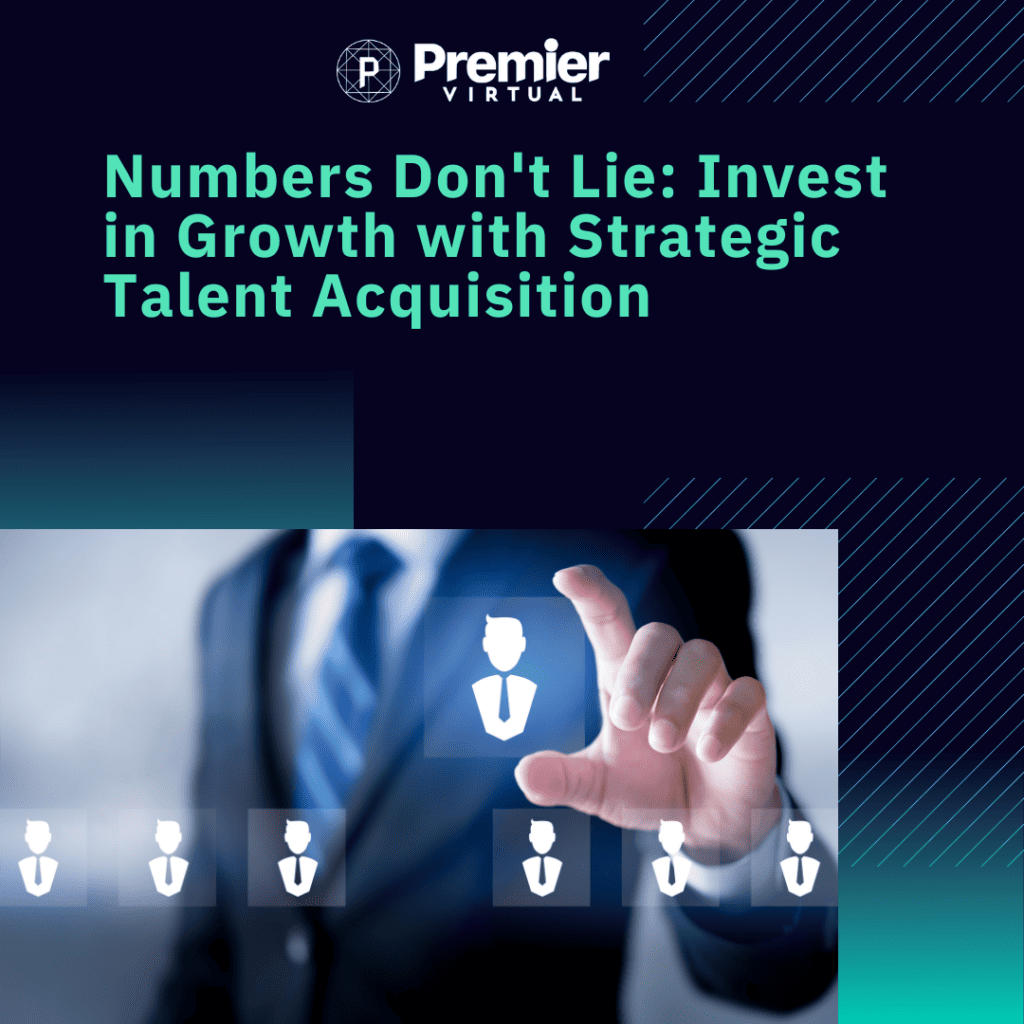
Hello, growth enthusiasts and forward-thinking leaders! 🚀 If there’s one undeniable truth in the business world, it’s this: Numbers don’t lie. When it comes to driving organizational growth, strategic talent acquisition stands out as the linchpin. In this blog, we’ll explore the numbers-backed case for investing in growth through strategic talent acquisition.
The Growth Imperative: Why Invest in Talent Acquisition?
Impact on Revenue:
Studies consistently show a positive correlation between effective talent acquisition and revenue growth. The right talent propels your business forward, contributing to increased productivity, innovation, and overall financial success.
Cost of Vacant Positions:
Every vacant position in your organization comes with a cost. The longer it remains unfilled, the more it impacts productivity, potentially leading to missed opportunities and revenue loss. Strategic talent acquisition ensures a streamlined process, reducing time-to-fill and mitigating these costs.
Retention as a Growth Driver:
Investing in the right talent isn’t just about recruitment; it’s about retention. High turnover rates can be a significant hindrance to growth. Strategic talent acquisition focuses not only on filling positions but on finding individuals who align with the company culture, reducing turnover and fostering a stable workforce.
The Numbers Game: Key Metrics to Track
Time-to-Fill:
Measure the time it takes to fill a vacant position. A prolonged hiring process can lead to increased costs and productivity loss. Strategic talent acquisition aims to optimize this metric, ensuring positions are filled efficiently.
Quality of Hire:
Evaluate the performance and impact of new hires. Are they contributing to the organization’s goals? Tracking the quality of hire provides insights into the effectiveness of your talent acquisition strategy.
Cost-per-Hire:
Calculate the cost incurred for each new hire. This includes recruitment expenses, onboarding costs, and any other related expenditures. Strategic talent acquisition aims to optimize this cost, ensuring efficiency without compromising quality.
Building a Strategic Talent Acquisition Framework
Align with Business Goals:
Your talent acquisition strategy should align with your overall business objectives. Identify the skills and expertise needed to drive growth and tailor your recruitment efforts accordingly.
Leverage Employer Branding:
A strong employer brand is a magnet for top talent. Invest in showcasing your company culture, values, and opportunities. A positive employer brand attracts high-quality candidates, enhancing the effectiveness of your talent acquisition efforts.
Utilize Technology Wisely:
Leverage advanced technologies, including AI-driven tools and applicant tracking systems, to streamline your talent acquisition process. Automation not only speeds up processes but also enhances the accuracy of candidate assessments.
In Conclusion: Numbers Tell the Tale
In the business world, numbers tell a compelling story. The numbers associated with strategic talent acquisition consistently reveal its impact on growth, revenue, and overall organizational success. As you chart the course for your company’s future, remember: when it comes to growth, numbers don’t lie. Invest strategically, acquire talent wisely, and watch your organization thrive. 📈✨
